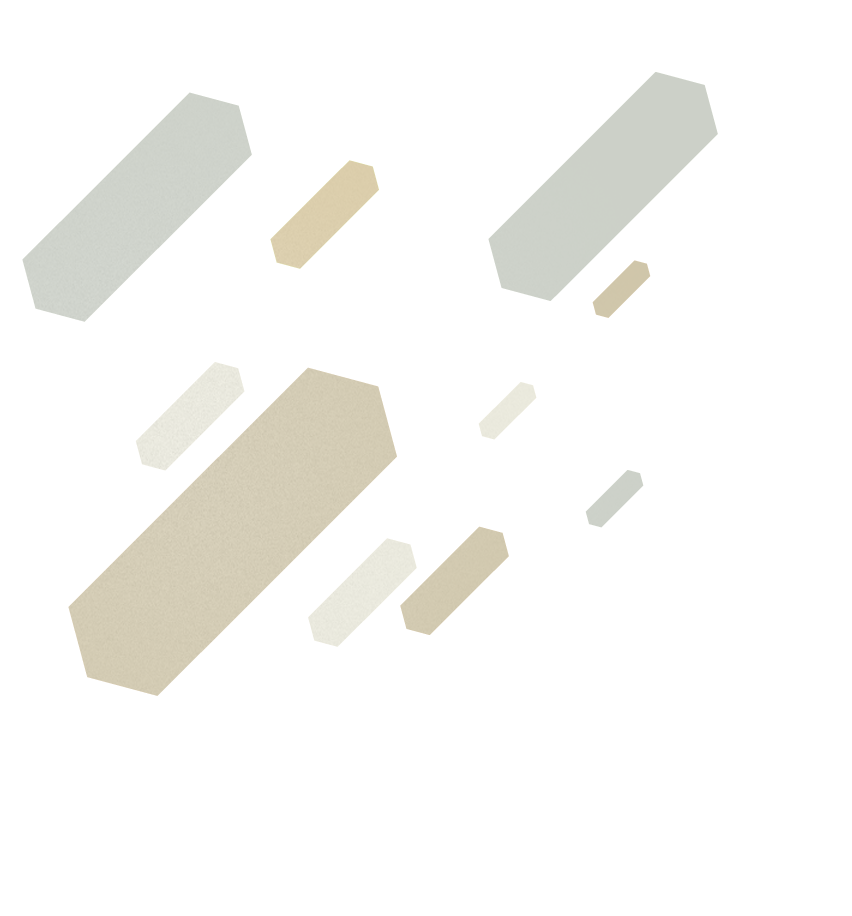


NEW IN CONTEXT
The majority of works featured at this year’s Warsaw Autumn consists of relatively or entirely new compositions that will have their first performances at the Festival. New and latest works, concerts with the use of new state-of-the-art technologies, idiosyncratic new art forms (including spatialisation, multimediality, installations), new takes at traditional genres, innovative performance techniques, and finally – the music of the youngest generation, including compositional debuts: all this contributes to the NEW that is emphasised in this year’s subtitle.
Yet for such a programme to be an outlook and not just a mere presentation, there needs to be a point of view, a context. The latter has been offered by the very special year 2013, which unites the 100th jubilee of Witold Lutosławski and the 80th anniversary of Henryk Mikołaj Górecki and Krzysztof Penderecki. Warsaw Autumn usually doesn’t stick to anniversaries, but these three concurrent occasions are a special circumstance because these three composers are fundamental authors for Polish music. To celebrate all three of them in one year is highly symbolic, and has encouraged us to look at the NEW from our perspective: that of the canon of modern Polish music. As well as the other way around: look at that canon from the current point of view, so that the latter becomes a context for music that has become canonical while chronologically remaining quite new.
•
The programme of this year’s festival emphasises three concerts with the music of Lutosławski, Górecki and Penderecki.
LUTOSŁAWSKI
We shall recreate an evening that took place at Warsaw Autumn twenty-five years ago. On that historical occasion, Krystian Zimerman and Witold Lutosławski with the National Philharmonic Orchestra gave the first Polish performance of the composer’s Piano Concerto. Memorably, Krystian Zimerman will com on stage again this year to present his new vision of the same Piano Concerto. Zimerman says that he is now moved by the deeply dramatic expression of Lutosławski’s music and its extramusical references to Polish history of the 1980s. And just as twenty-five years ago, Lutosławski’s Symphony No. 3 will be presented as well, with Jacek Kaspszyk conducting the National Philharmonic Orchestra.
GÓRECKI
We shall hear all three of Henryk Mikołaj Górecki’s String Quartets, presented during one evening in a sort of musical marathon. This shall be a memorable experience: interpreted by the Silesian Quartet, Górecki’s chamber masterpieces will become stations on a single itinerary, thereby disclosing their new dimension.
PENDERECKI
When Krzysztof Penderecki presented a new aesthetic approach in his St. Luke Passion, he was accused of betraying the avant-garde. Yet the Passion became one of the leading exponents of its genre and entered the canon not only of Polish music but universal music of the second half of the twentieth century. It will be performed this year by the National Philharmonic Choir and Orchestra and the Warsaw Boys’ Choir, with soloists Christiane Libor, Stephan Klemm, Jarosław Bręk and Daniel Olbrychski, directed by Antoni Wit.
•
These three concerts define this year’s festival programme, and resonate with a number of compositions and phenomena of the latest modern music.
SPECTACULAR COMPOSITIONS
This section will include large-scale musical shows: Libro de las estancias by José María Sánchez-Verdú, a sort of metaphorical pilgrimage (a composition to visit), as well as A Laugh to Cry by Miguel Azguime, a multimedia opera in which speech becomes music, and music becomes speech (a Warsaw Autumn commission).
The Libro de las estancias (Book of the Abodes) is a work at the same time vocal, instrumental, electronic, light and spatial, scored for countertenor, Arab voice, two twin choirs and twin instrumental groups, auraphone (gongs and tam-tams with adjacent loudspeakers that generate their musical vibrations) and live electronics. The solo vocal parts will be interpreted by Carlos Mena and Marcel Pérès while the spatial projection of electronic sound will be overseen by specialists from the Experimentalstudio in Freiburg. The Camerata Silesia choir and New Music Orchestra, located at the opposite ends of the huge Soho Factory hall, will be directed by Szymon Bywalec and the composer.
In A Laugh to Cry, Miguel Azguime looks to achieve a dynamic continuum combining spectra of timbre, harmony, rhythm and voice. This opera is scored for two sopranos, bass, two narrators and instrumental ensembles as well as live electronics and an extensive video scenography. It is a metaphysical theatre play about archetypal issues nurturing humanity. The libretto is by the composer who appears on stage alongside, notably, Frances M. Lynch and Nicholas Isherwood, accompanied by the Swedish Norbbotten Neo ensemble as well as video and electronics by the Miso Studio from Lisbon.
This group of compositions also includes Jacek Grudzień’s Preparation for Change, a choreographic–musical work with the participation of dancer Izabela Chlewińska and pianist Włodek Pawlik (world premiere), as well as the shorter theatre-inspired work by Lucia Ronchetti, Hombre de mucha gravedad for four voices and string quartet, a grotesque study of Velázquez’s famous painting Las Meninas be performed by Neue Vocalsolisten and the Silesian Quartet.
A MULTITUDE OF VOCAL-INSTRUMENTAL GENRES
Furthermore, this year’s Warsaw Autumn will feature first performances of three of choral-orchestral compositions: Ondřej Adámek’s Polednice to words by Karel Jaromír Erben (a Warsaw Autumn commission), a sort of dramatic tale presented – in the words of the composer – in a hyperrealistic, theatrical way; Rafał Augustyn’s Tam. Muzyka na skrzypce, głosy i instrumenty (Tam. Music for violin, voices and instruments), in which the composer uses a choir instead of string quintet; and Stanisław Krupowicz’s Machinæ cœlestes for soprano, choir, computer and orchestra, a joint commission from Warsaw Autumn and the Space Research Centre of the Polish Academy of Sciences to commemorate the launch of Polish satellite Heweliusz.
This, however, does not exhaust all the vocal-instrumental works of this year’s Warsaw Autumn. Besides Bruno Mantovani’s Cantata No. 4 for accordion, cello and chamber choir with highlighted solo voices singing in quartertones, performed by TWOgether Duo and Camerata Silesia, the programme will also feature a Warsaw Autumn commission by Grzegorz Pieniek as well as two other world premieres by Arthur Kampela and Uroš Rojko, scored for mezzo-soprano (the brilliant Sylvia Nopper), clarinet, guitar and accordion, and finally Fabián Panisello’s Libro del frío for soprano and six instruments. The scoring of these works is a reference to Schoenberg’s Pierrot lunaire but their compositional techniques goes well beyond the Sprechgesang; they will be performed by Allison Bell.
OPENING, ORCHESTRAL WORKS
This year’s orchestral works include Tristan Murail’s concerto for piano and orchestra Le désenchantement du monde of 2012 (performed at the festival’s opening concert by Hidéki Nagano and the Polish National Radio Symphony Orchestra in Katowice under Alexander Liebreich), and Zbigniew Bargielski’s Concerto for Piano, Percussion and Symphony Orchestra, a Warsaw Autumn commission (performed by Małgorzata Walentynowicz and Jan Pilch with the Polish Radio Orchestra directed by Renato Rivolta).
The opening concert will also feature, besides Adámek’s Polednice and Murail’s Concerto, Hunag Ruo’s The Color Yellow for the Chinese bamboo mouth organ sheng (with Wu Wei, renowned sheng virtuoso, as the soloist) and small orchestra, before climaxing with the vivid, fiery Symphonic Frescoes of Kazimierz Serocki. This work is a leading example of Polish sonorism, a style overthrown by Krzysztof Penderecki in his St. Luke Passion.
THE FINALE
The final concert’s orchestral works merit a separate mention. Each of these compositions is dedicated to the memory of Witold Lutosławski, establishing the concert’s leading motif: Paweł Szymański’s Sostenuto, the world premiere of Albanese–British composer Thomas Simaku’s Concerto for Orchestra, 1st Prize winner at the international composition competition organised by the Witold Lutosławski Society to commemorate the composer’s 100th anniversary, and Thomas Adès’ 40-minute Totentanz for mezzo-soprano, baritone and large symphony orchestra – the second world performance of this work after its premiere at this year’s BBC Proms in London. Performers of the final concert include singers Christianne Stotijn and William Dazeley, accompanied by the National Philharmonic Orchestra directed by Rafał Janiak.
ENSEMBLE MODERN PLAYS YOUNG WORKS
The new and current will be exemplified, significantly, by two concerts of the Ensemble Modern, featuring works commissioned with young composers from five Central and Eastern European countries. The first performances of these works took place in December 2012 in Munich. The project is titled Where from? Where to? – Myths, nationalities and identities and is an initiative of the Goethe Institute which also supports the Warsaw Autumn concerts this year. The renowned Ensemble Modern will perform under the baton of Clemens Heil.
HOMAGE TO ANDRZEJ
Another special concert will be dedicated to the memory of Andrzej Chłopecki, leading Polish musicologist, critic and animator, acknowledged expert on modern music and member of the Programme Committee of Warsaw Autumn, who passed away last year. The concert will feature works by Onutė Narbutaitė, Martin Smolk, Marcin Bortonowski, Paweł Szymański and Paweł Mykietyn; the latter will present an extraordinary composition consisting of music recorded on wax cylinders and performed by phonographs.
INSTALLATIONS
This year’s programme will also include two large interactive installations, reflecting another aspect of the new emphasised by Warsaw Autumn’s subtitle. The first spatial and multimedia-based installation is Adam Dudek and Aleksander Nowak’s Spoon River Anthology, titled after the famous collection of poetic epitaphs by Edgar Lee Masters, in which dead characters narrate their stories from the past. Visitors of the exhibition will, in a way, rescue them from oblivion the characters showing and singing on computer screens.
Paweł Janicki’s aleatory installation LutoScratch, on the other hand, is inspired by the work of Witold Lutosławski. Visitors can shape its sound and vision with the aid of DJ and mobile devices (thanks to three turntables and MIDI timecoded discs). The installation is organised with the support and on the initiative of the Adam Mickiewicz Institute.
OTHER INTRIGUING (COM)POSITIONS IN THE PROGRAMME
Fresh, unconventional compositions performed by the European Workshop for Contemporary Music include notably Yannis Kyriakides’ Telegraphic, a work for instruments and six telegraphs; Canadian composer Annesley Black’s Snow Job for instruments and lights, an attempt at breaking with the predictability of sound events; and jazz composer and guitarist Matthias Ockert’s open room in overlapping spaces.
Moreover, we shall present Yann Robin’s Art of Metal I for a contrabass clarinet fully built of metal (including the mouthpiece) and ensemble, Keir Neuringer’s The Love Story (a “plunderphonic noise monodrama for breathing saxophone, cassette tapes and mixer”) performed by the composer, and several compositions for violin and electronics performed by Karin Hellquist including Dominik Karski’s Certainty’s Flux (world premiere) and Joakim Sandgren’s lumières noires.
Another interesting concert will be presented by the Phoenix Basel Ensemble, featuring Georg F. Haas’ AUS.WEG (where percussion instruments are used as pendulums), Piotr Roemer’s Soneostasis for ensemble and electronics (a Warsaw Autumn commission), Füsun Köksal’s Deux visions pour sextuor and Elena Mendoza’s Díptico.
The Silesian Quartet, apart from Lucia Ronchetti’s Hombre de mucha gravedad, will also present Sławomir Wojciechowski’s Blind Spot, a study of string articulation and timbre (world premiere), and Rebecca Saunder’s innovative overtone-driven Fletch.
The concert featuring José María Sánchez-Verdú’s Libro de las estancias will also include other classics: Klaus Huber’s Erinnere dich an Golgatha… for double bass and ensemble (presented in a new version with electronics) and Brian Ferneyhough’s Mnemosyne for bass flute and tape. That concert is organised in cooperation with the Experimentalstudio in Freiburg and the Ernst von Siemens Music Foundation.
FRINGE EVENTS
These will include one event of primary importance: the scientific conference Witold Lutosławski’s music at the threshold of the 21st century. Realisations, assessments, perspectives. And, as usually, concerts, meeting with composers, and book presentations.
Tadeusz Wielecki
Director of the Festival




